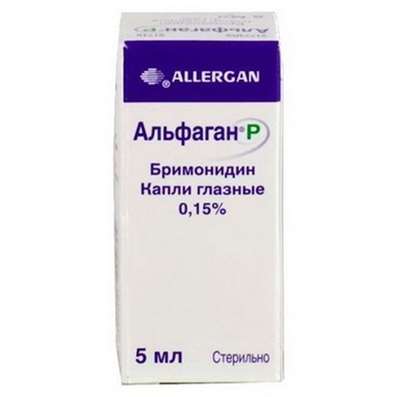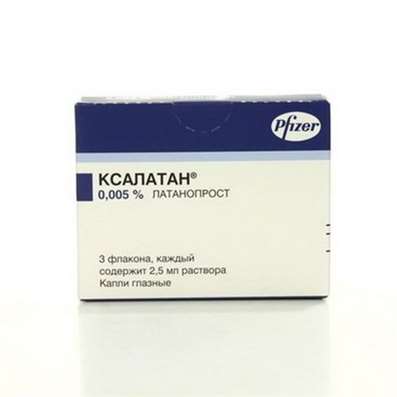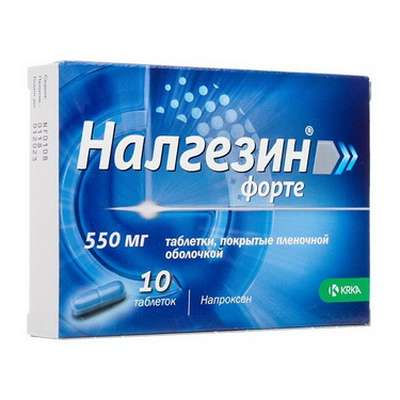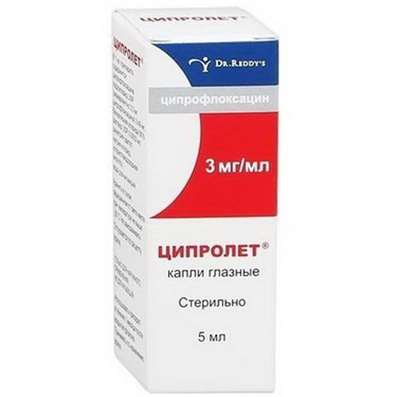Instruction for use: Propofol Kabi
I want this, give me price
Dosage form: emulsion for intravenous administration
Active substance: Propofol*
ATX
N01AX10 Propofol
Pharmacological group:
Anesthetic means
The nosological classification (ICD-10)
Z100.0 * Anesthesiology and premedication: Abdominal surgery; Adenomectomy; Amputation; Angioplasty of the coronary arteries; Carotid artery angioplasty; Antiseptic treatment of skin in wounds; Antiseptic treatment of hands; Appendectomy; Atheroctomy; Balloon coronary angioplasty; Vaginal hysterectomy; Venous bypass; Interventions on the vagina and cervix; Interventions on the bladder; Interference in the oral cavity; Reconstructive-reconstructive operations; Hand hygiene of medical personnel; Gynecological Surgery; Gynecological interventions; Gynecological operations; Hypovolemic shock during surgery; Disinfection of purulent wounds; Disinfection of the edges of wounds; Diagnostic Interventions; Diagnostic procedures; Diathermocoagulation of the cervix; Long-term surgeries; Replacement of fistulous catheters; Infection in orthopedic surgical interventions; Artificial heart valve; Kistectomy; Short-term outpatient surgery; Short-term operations; Short-term surgical procedures; Cryotyreotomy; Blood loss during surgical interventions; Bleeding during surgery and in the postoperative period; Kuldotsentez; Laser coagulation; Laserocoagulation; Laser retinopathy of the retina; Laparoscopy; Laparoscopy in gynecology; Likvornaya fistula; Small gynecological operations; Small surgical interventions; Mastectomy and subsequent plastic surgery; Mediastinotomy; Microsurgical operations on the ear; Mukinging operations; Suturing; Minor surgery; Neurosurgical operation; Eclipse of the eyeball in ophthalmic surgery Orchiectomy; Pancreatectomy; Pericardectomy; The rehabilitation period after surgical operations; Reconvalence after surgical intervention; Percutaneous transluminal coronary angioplasty; Pleural Thoracocentesis; Pneumonia postoperative and post traumatic; Preparing for surgical procedures; Preparing for a surgical operation; Preparation of the surgeon's arms before surgery; Preparation of the colon for surgical interventions; Postoperative aspiration pneumonia in neurosurgical and thoracic operations; Postoperative nausea; Postoperative hemorrhage; Postoperative granuloma; Postoperative shock; Early postoperative period; Myocardial revascularization; Resection of the apex of the tooth root; Resection of the stomach; Bowel resection; Resection of the uterus; Liver resection; Small bowel resection; Resection of a part of the stomach; Reocclusion of the operated vessel; Gluing of tissues during surgical interventions; Suture removal; Condition after eye surgery; Condition after surgery; Condition after surgery in the nasal cavity;Condition after gastrectomy; Condition after resection of the small intestine; Condition after tonsillectomy; Condition after removal of duodenum; Condition after phlebectomy; Vascular Surgery; Splenectomy; Sterilization of surgical instrument; Sterilization of surgical instruments; Sternotomy; Dental surgery; Dental intervention on periodontal tissues; Strumectomy; Tonsillectomy; Thoracic surgery; Total gastrectomy; Transdermal intravascular coronary angioplasty; Transurethral resection; Turbinectomy; Removal of a tooth; Cataract removal; Removing Cysts; Removal of tonsils; Removal of myoma; Removal of mobile milk teeth; Removal of polyps; Removal of a broken tooth; Removal of the uterus; Removal of seams; Urethrotomy; Fistula of the luminal ducts; Frontoetmoidohaimorotomy; Surgical infection; Surgical treatment of chronic ulcers of extremities; Surgery; Surgery in the anus; Surgery on the large intestine; Surgical practice; Surgical procedure; Surgical interventions; Surgical interventions on the digestive tract; Surgical interventions on the urinary tract;Surgical interventions on the urinary system; Surgical interventions on the genitourinary system; Surgical intervention on the heart; Surgical procedures; Surgical operations; Surgical operations on veins; Surgical intervention; Vascular; Cholecystectomy; Partial resection of the stomach; Extraperitoneal hysterectomy; Percutaneous transluminal coronary angioplasty; Percutaneous transluminal angioplasty; Coronary artery bypass grafting; Extirpation of the tooth; Extirpation of infant teeth; Extirpation of pulp; Extracorporeal circulation; Extraction of the tooth; Extraction of teeth; Extraction of cataracts; Electrocoagulation; Endourological interventions; Episiotomy; Ethmoidotomy; Complications after tooth extraction
Composition
Emulsion for intravenous administration 1 ml
active substance:
propofol 20 mg
auxiliary substances: soybean oil - 50 mg; medium chain triglycerides - 50 mg; phospholipids of egg yolk - 12 mg; glycerol 22.5 mg; oleic acid 0.4-0.8 mg; sodium hydroxide - q.s. (0.05-0.11 mg); water for injection - up to 1 ml
Pharmachologic effect
Pharmacological action - general anesthetic.
Dosing and Administration
IV.
Propofol Kabi, 20 mg / ml, can be used only by anesthetists in hospitals or adequately equipped outpatient departments, as well as in intensive care units.
When administering Propofol Kabi, 20 mg / ml, the doctor should have the equipment usually used for general anesthesia, incl. means of monitoring the function of CCC (ECG, pulse oximetry) and resuscitation means.
The dose of Propofol Kabi, 20 mg / ml, must be selected individually, taking into account the patient's response and premedication.
As a rule, when using the drug, additional administration of analgesic drugs is required.
General anesthesia in adults
Introduction to general anesthesia: When administered to general anesthesia, Propofol Cabi, 20 mg / mL, should be given fractionally (approximately 20-40 mg of propofol every 10 seconds) until clinical signs of anesthesia appear.
The usual dose for adults under 55 is 1.5-2.5 mg / kg.
In elderly patients and patients with grade III and IV severity, according to the classification of the American Society of Anesthesiologists (ASA), especially with impaired cardiac function, the dose required is usually lower. The total dose of Propofol Kabi, 20 mg / ml, can be reduced to a minimum of 1 mg / kg. Requires a slower administration of Propofol Kabi, 20 mg / ml - approximately 1 ml (20 mg of propofol) every 10 seconds.
Maintenance of anesthesia: to maintain general anesthesia Propofol Kabi, 20 mg / ml, is injected continuously drip or repeatedly in the form of boluses.
For anesthetics, propofol is used at a dose of 4-12 mg / kg.
In less severe surgical interventions, for example, minimally invasive, it is possible to reduce the maintenance dose to about 4 mg / kg / h.
In elderly, patients with unstable general condition, patients with impaired cardiac function or hypovolemia and patients with grade III-IV severity, the ASA classification can be reduced even more, taking into account the severity of the condition and the technique of anesthesia.
General anesthesia in children older than 3 years
Propofol Kabi, 20 mg / ml, is not recommended for general anesthesia in children under 3 years of age, since the concentration of the emulsion is 20 mg / ml, it is difficult to titrate, and small children need a very small amount of the drug. For children from 1 months to 3 years, it is recommended to use Propofol Kabi, 10 mg / ml, with a dose should be less than 100 mg / h.
Introduction to general anesthesia: when administered to general anesthesia, slow titration of the dose of Propofol Kabi, 20 mg / ml, is recommended until the appearance of clinical signs of general anesthesia.
The dose is chosen taking into account the age and / or body weight.
In children older than 8 years, the dose required for administration to general anesthesia is approximately 2.5 mg / kg.
In young children, the dose may be higher. The drug is started with a dose of 3 mg / kg. If necessary, additional doses of 1 mg / kg may be administered.
Children from high-risk groups (III-IV severity of ASA classification) are recommended to have lower doses.
Maintenance of anesthesia: to maintain general anesthesia, a continuous infusion of 9-15 mg / kg / h is administered.
There are no data on repeated injections of propofol to maintain general anesthesia in children.
The dose is selected individually. It is necessary to pay special attention to the adequacy of anesthesia.
Sedation in adults in intensive care units
For sedation during IVL in intensive care units, Propofol Kabi, 20 mg / mL, is recommended to be administered by continuous infusion. The dose is selected taking into account the necessary depth of sedation. Usually adequate sedation can be achieved at a rate of propofol administration of 0.3-4 mg / kg / h. Increase the rate of administration of more than 4 mg / kg / h is not recommended.
Propofol Kabi, 20 mg / mL, should not be used for sedation in intensive care units in patients 16 years and under.
Methods of administration
For IV introduction.
Propofol Kabi, 20 mg / ml, is administered iv in undiluted form as a continuous infusion.
Propofol Kabi, 20 mg / ml, can not be used for repeated bolus injection to maintain anesthesia.
When administering the drug Propofol Kabi, 20 mg / ml, it is recommended to control the infusion rate with a burette, dropper, syringe or infusion pump.
The vial should be shaken before the introduction. Apply only a homogeneous product from an intact vial. Before use, the rubber membrane of the vial should be treated with alcohol.
Since Propofol Kabi, 20 mg / ml, is a fat emulsion that does not contain any preservative and does not have antimicrobial activity, the preparation can serve as a favorable medium for rapid growth of microorganisms.
Emulsion should be typed in a sterile syringe or dropper immediately after opening the ampoule or vial. The preparation should be started without delay.
During the entire period of administration of Propofol Kabi, 20 mg / ml, the rules of aseptic work with the drug and the system for parenteral administration should be observed.
Other drugs or solutions that need to be administered concurrently with the administration of Propofol Kabi, 20 mg / ml, should be injected into the dropper through a Y-shaped connector or valve.
PropofolKabi, 20 mg / ml, should not be mixed with other solutions for IV administration. However, through the cannula of a dropper, you can simultaneously inject 5% glucose solution, 0.9 or 0.18% sodium chloride solution and 4% glucose solution.
Propofol Kabi, 20 mg / ml, can not be administered via an antibacterial filter.
Propofol Kabi, 20 mg / ml, and other infusion systems containing propofol, are for single use only and only for one patient individually.
Any residues of the Propofol Kabi emulsion, 20 mg / ml, should be disposed of after use.
As with other fat emulsions, the duration of administration of Propofol Kabi, 20 mg / ml, with a single infusion system should not exceed 12 hours. After 12 hours, the infusion system and the reservoir with Propofol Kabi, 20 mg / ml, should be replace.
To reduce pain when injected, the infusion should be performed in a larger vein, or just before the infusion of the drug Propofol Kabi, 20 mg / ml, a lidocaine solution can be administered.
Muscle relaxants, such as atracurium and myovacury, can be administered via the same catheter only after jetting.
Duration of application should not exceed 7 days.
Release form
Emulsion for intravenous administration, 20 mg / ml. In bottles of colorless glass type II (Ph. Eur.), Sealed with stoppers made of halobutyl rubber and coated with aluminum caps with plastic caps to control the first opening (Ph. Eur.), 50 ml. 1 or 10 bottles in a pack of cardboard.
Conditions of leave from pharmacies
On prescription.
Use only in hospital settings.
Storage conditions for Propofol Kabi
At a temperature of no higher than 25 ° C. Do not freeze!
Keep out of the reach of children.
Shelf life of Propofol Kabi
3 years.
Do not use after the expiry date printed on the package.

 Cart
Cart





